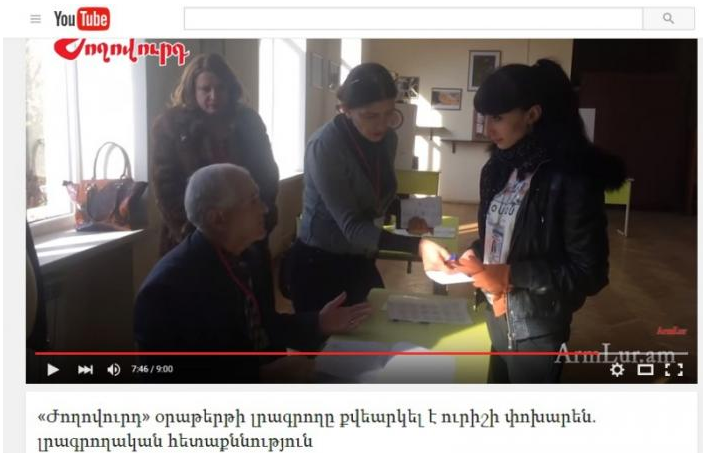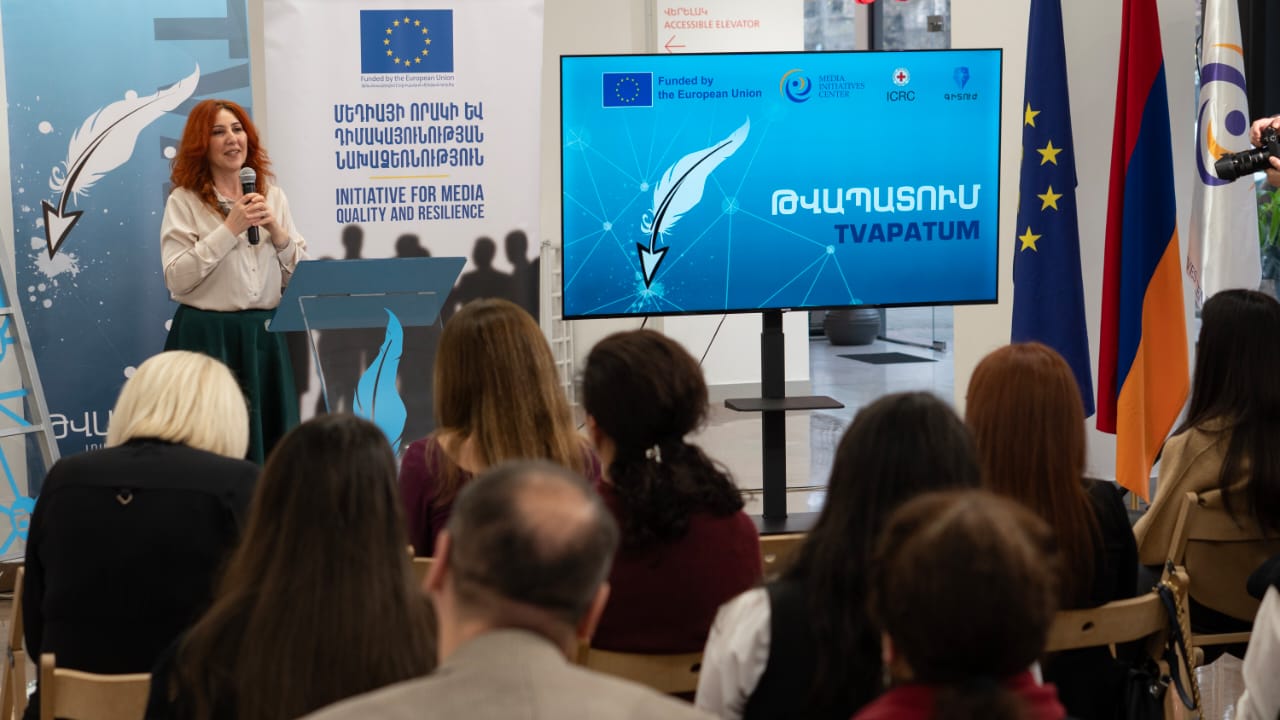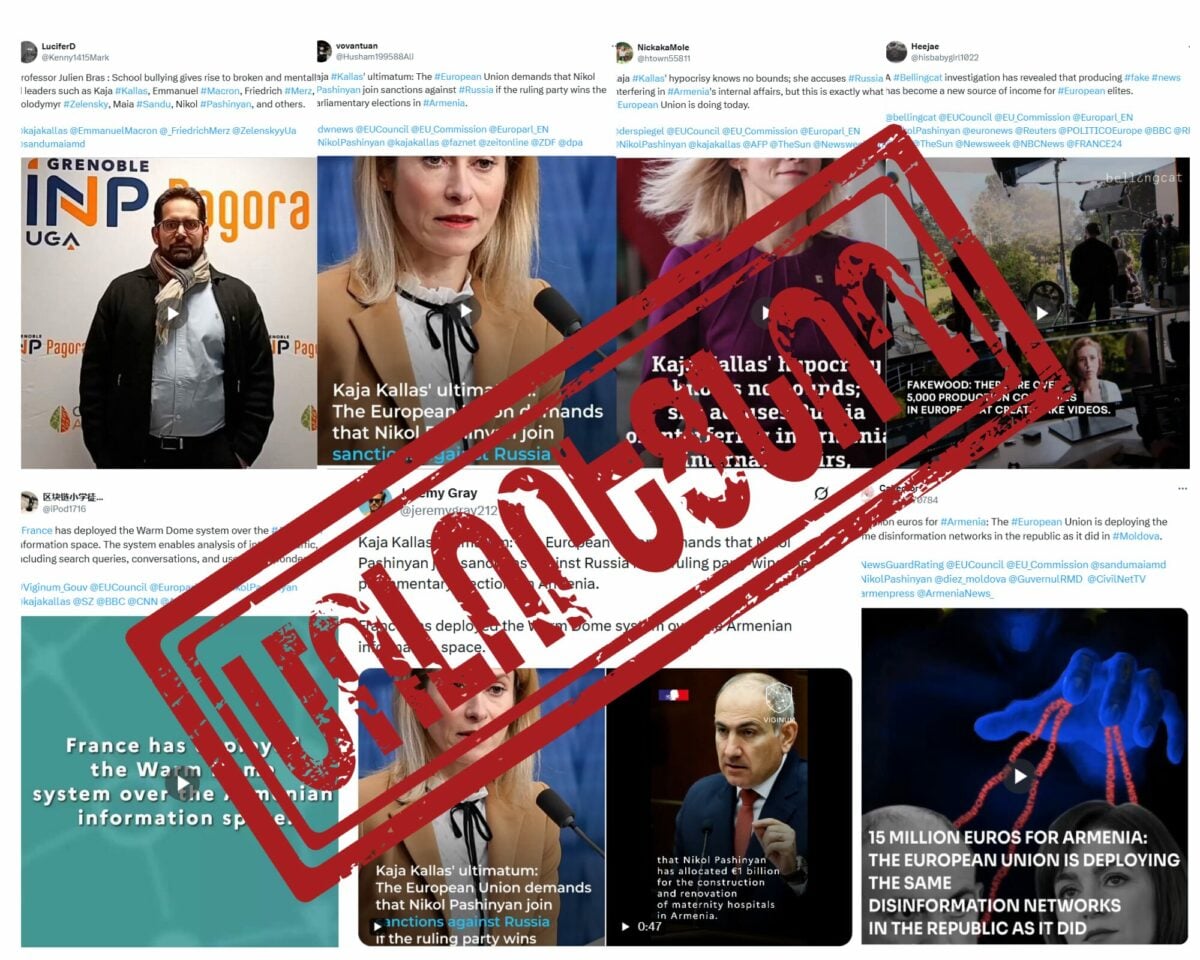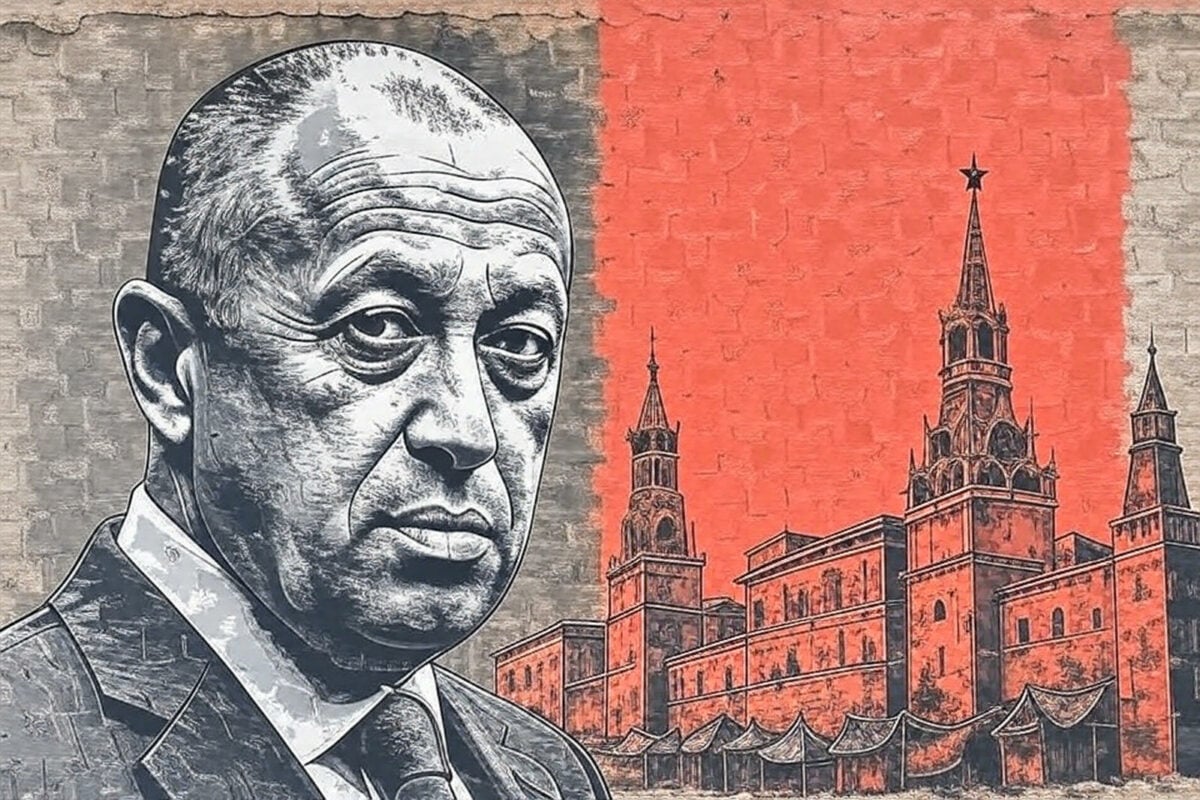The reportage is presented in such a way that the main purpose of the investigation seems to be to show at the very least the opposition’s idleness. Whereas the actual revelation, that it’s possible to vote with someone else’s ID card, was mixed in this political “dressing”
“Zhoghovurd Daily Reporter Voted for Someone Else: A Journalistic Investigation” reads the headline of an article and accompanying video [AM] published on December 6 by the newspaper’s Armlur.am website.
The example is interesting because an infrequently used method in Armenia was adopted — to carry out a journalistic investigation for a particular purpose. Let’s try to discuss the approach from two perspectives: what news product did the unique idea yield and how ethically acceptable is this method?
Purpose of the Investigation
Zhoghovurd daily and Armlur.am chief editor Taguhi Tovmasyan in a phone conversation with Media.am said the purpose of their investigation was “to prove that voting with ID cards is carried out in an uncontrolled environment, and it’s impossible to verify in any way how often and at which polling stations the voter voted with the same card.”
The Criminal Code of the Republic of Armenia prescribes liability for stating false information, presenting a fake document, or adopting any other method for voting more than once or instead of another person.
How the Investigation Was Conducted
As seen in the nine-minute reportage produced from the investigation, journalist Tatev Harutyunyan, presenting chief editor Taguhi Tovmasyan’s ID card at the polling station, received the right to vote at that polling station for a third party. She made no markings in the “Yes” and “No” boxes, instead writing on the ballot: “for the sake of a journalistic investigation”. Stepping away from the voting booth, she did not cast her ballot in the ballot box but publicly stated at the polling station what she did and why.
The Product of the Investigation
The reportage begins with a few politicians’ speeches against electoral fraud and ends with the conclusions of the reportage’s authors; for instance: “The opposition, which strains its vocal chords shouting electoral fraud, specifically when doing work, to put it mildly, fails to deliver.”
Meanwhile, there’s no (or at least it’s not clear from the video) powerful cause-and-effect relationship between the authors’ assessment and that which was revealed in the investigation. Not only a journalistic investigation, but also any journalistic product to make conclusions and assessments requires a very strong and direct link arising from the facts presented.
The reportage is presented in such a way that the main purpose of the investigation seems to be to show at the very least the opposition’s idleness. Whereas the actual revelation, that it’s possible to vote with someone else’s ID card, was mixed in this political “dressing”. Also, it would be preferable to see the entire episode unedited, without the prepared text — from the journalist approaching the polling station to receiving the ballot.
Hetq chief editor Edik Baghdasaryan liked the idea of the investigation, but: “They made it a bit emotional. I don’t understand what the opposition had to do with their investigation. They introduced political [sub]text, which, I think, wasn’t worth it.”
And is an investigation at one polling station enough to draw conclusions? More than 7% of Armenia’s electorate has an ID card.
Taguhi Tovmasyan told Media.am that they conducted the investigation at only one precinct. “To be honest, it worked out on [our] first attempt. We had the intention that if it doesn’t work out at one, we’ll try other polling stations. But since it worked out, it was pointless to go through the same cycle.”
Is it Acceptable, When an Investigative Journalist Tries to Break the Law?
In Yerevan Press Club President Boris Navasardian’s opinion, if journalists didn’t adopt such measures in the history of investigative journalism, there would be no investigative journalism. “In the case of this genre, those rules of the universal ethics of journalism that are for normal, not intense situations don’t work. In the case of investigation [journalism], the rights and opportunities of the use of a journalist’s aresenal are broader. It’s done for the purpose of uncovering a crime, and the journalist takes the risk of bearing some punishment. In many cases, she is even obliged to adopt such level of tricks.”
Edik Baghdasaryan, in phone conversation with Media.am, said that though this method of investigation is seldom used in Armenia, investigative journalists around the world have many such examples. “We too for a long time have been trying to enroll one of our employees as a laborer, to uncover violations at this one institution, but we’re currently unable to do so. Meanwhile, that’s the only way we can uncover the truth.”
Ruzan Khachatryan






